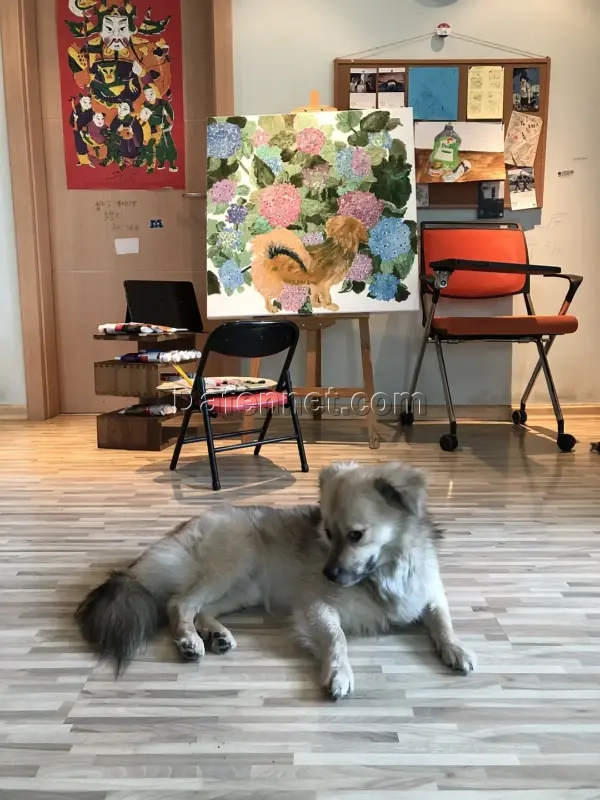Dafen oil painting Village
Learning Oil Painting: Expressing Memories on Canvas
Addicted to Painting What I Want
Lately I’ve picked up oil painting, and to be honest, I knew nothing about it at first. I simply ordered some brushes, a set of 18 common oil colors, and a pre-stretched canvas from Taobao—and then I just started.
My first experiment was a painting of waves, and after finishing it, I realized I had no idea how to clean the paint off my brushes. Oil paints don’t dissolve in water at all! So I searched online and found out that I needed to use turpentine and linseed oil first, then scrub the remaining paint off with laundry soap. Quite a hassle—but since no one else would do the dirty work for me, I had to learn.
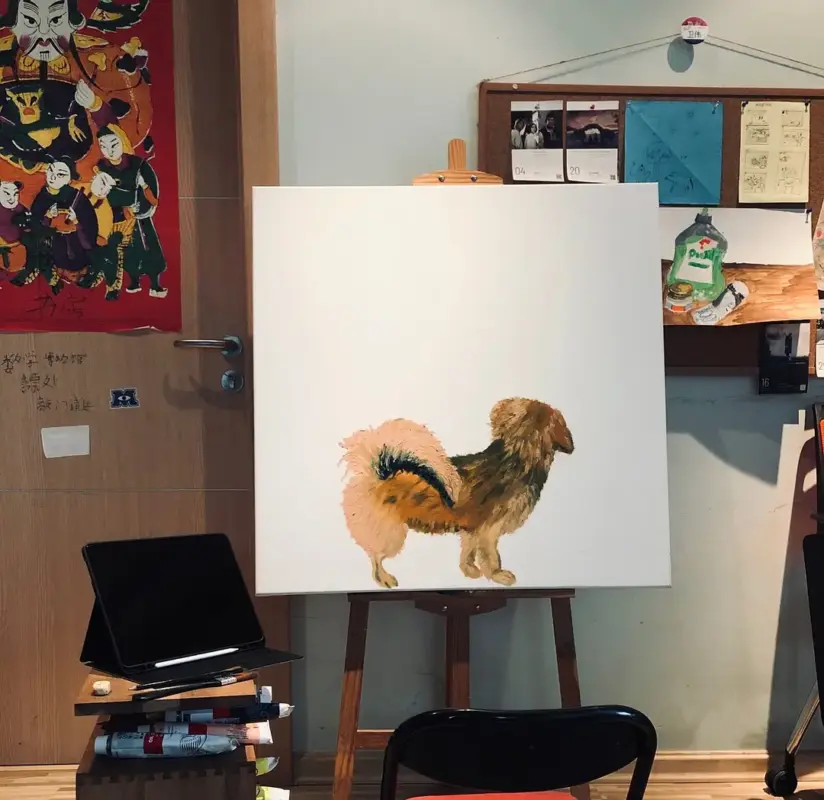
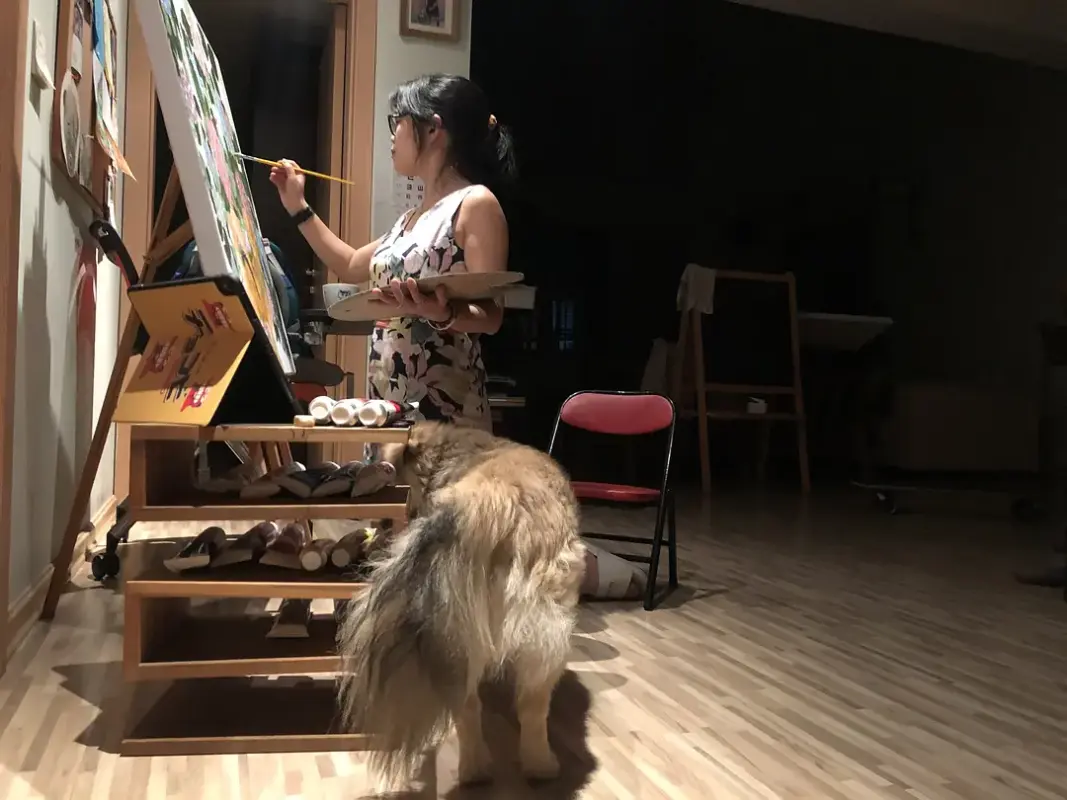
Downstairs near my home, there’s a big hydrangea bush that bursts into full bloom every June. The flowers are huge, heavy, and vibrant—sometimes so heavy that the stems bend under their weight. On the same bush, the blossoms show different colors depending on the soil: pink, blue, or even half-pink, half-blue. Every day during its month-long flowering season, it feels different. Of course, some flowers get stolen by people passing by, but luckily no one has ever stripped the entire bush.
I look at these hydrangeas every day when I take my dog for a walk, and one day I decided I should paint them. That became my first painting: “Dog and Hydrangeas.” I used bright reds, purples, and blues for the blossoms, with olive green and cobalt blue for the leaves. When I looked at it, I felt like I had somehow expressed my inner world.
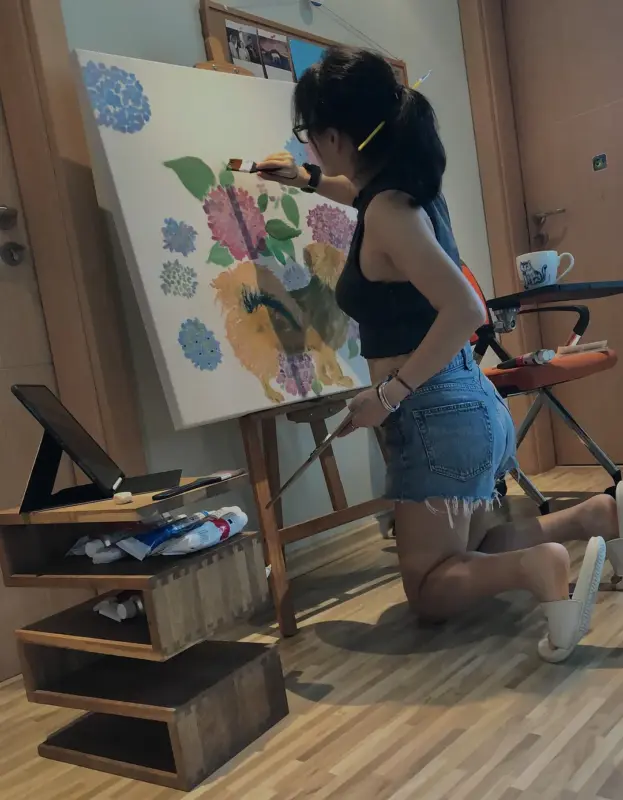
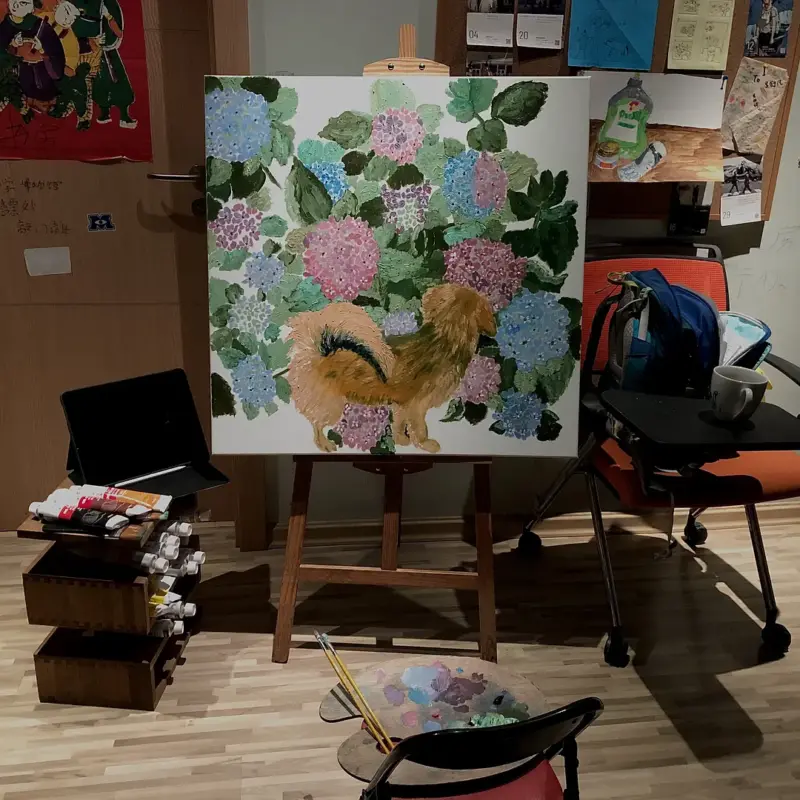
Before that, though, the first scene I really wanted to paint was a tortoiseshell cat at Yongfu Temple in Hangzhou. I saw it years ago, sitting on a stone bench outside the temple, basking in the early spring sunlight, its eyes half-closed with pleasure. Behind it was the monastery’s distinctive yellow wall. That moment is still vivid in my memory, and I’ve kept a photo of it in my phone all these years.
But when I began painting, I didn’t have the right dark pigments—the deepest color in my set was cobalt blue. The tortoiseshell cat, glowing in sunlight, clearly needed a broader, richer palette. So I put it aside and started with “Dog and Hydrangeas” instead.
By the time I finished that painting, I had gained both experience and questions. Should my paintings strive for realism and precision, or should they simply express how I feel? Before a work is complete, everything feels vague—you don’t know whether the result will match what you imagined. Luckily, I had once bought a big book of Renoir’s works, and leafing through it gave me some answers. I didn’t fully understand, but I decided what kind of approach I should take.
When I finally painted the “Cat at Yongfu Temple”, my doubts had faded. I just sketched the cat’s shape loosely in pencil and then went straight in with broad brushstrokes.
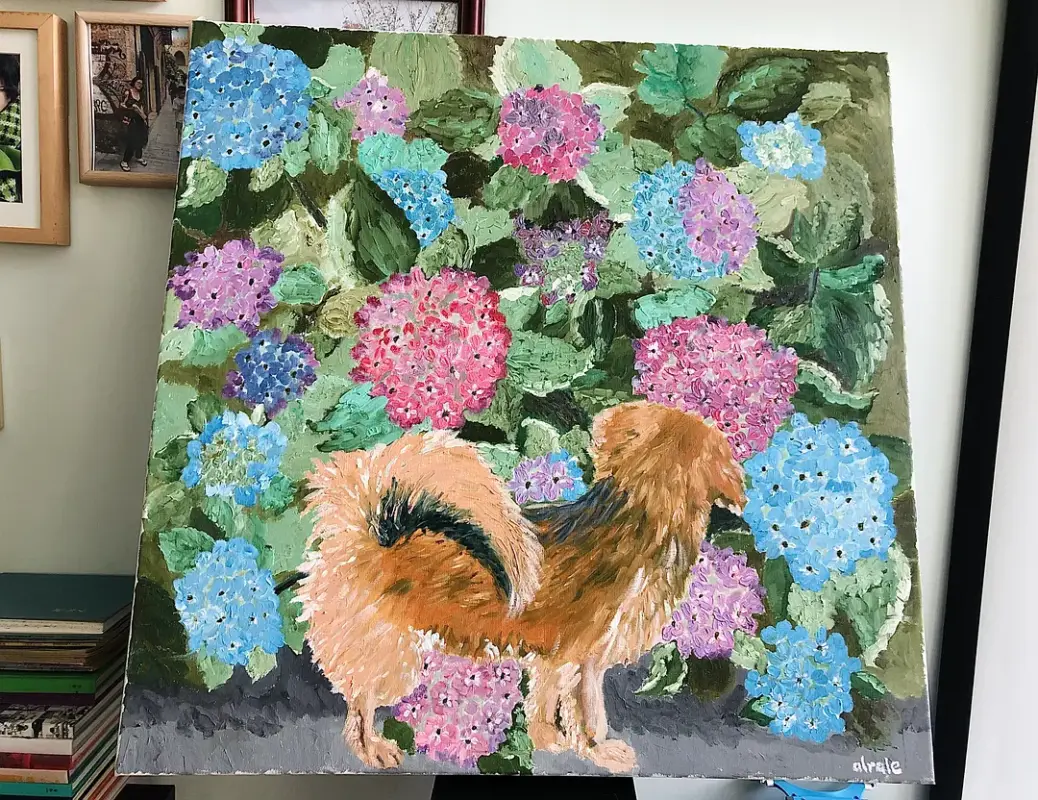
Both of these paintings left me deeply satisfied. They captured what I wanted to express.
Then came the third painting. At first, I had no clear subject. I started digging through my memories—while walking my dog, running, eating, even before sleeping. And then something surfaced: a childhood memory.
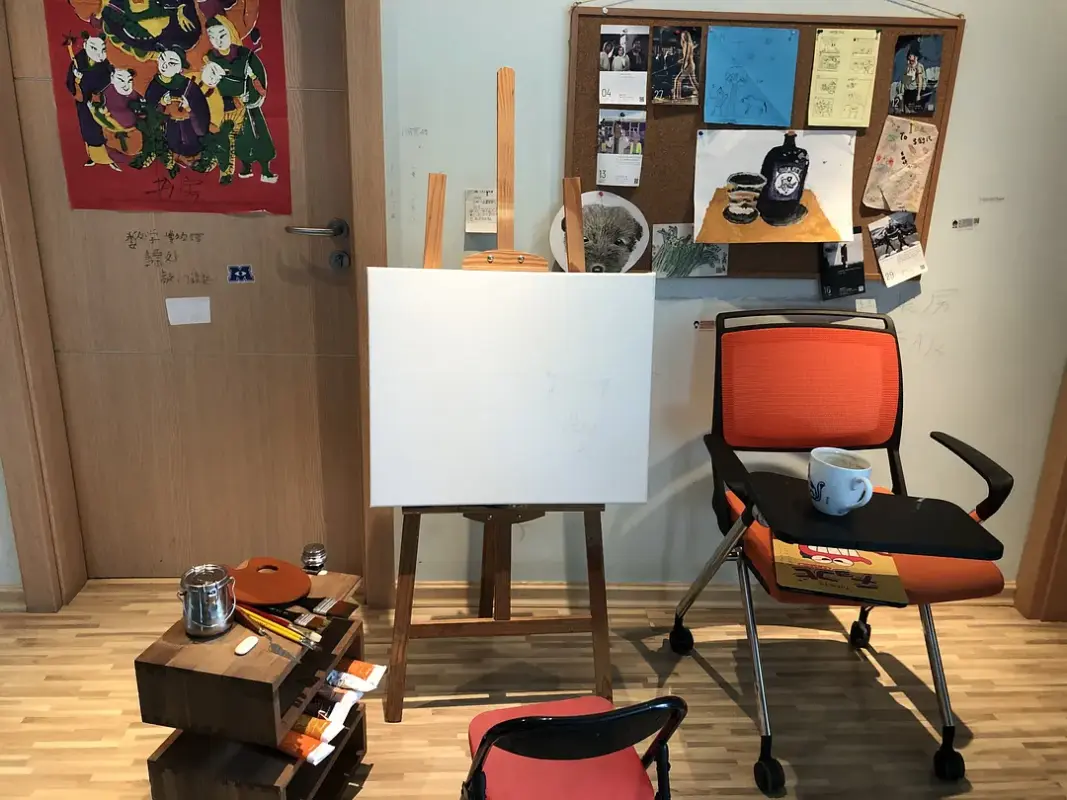
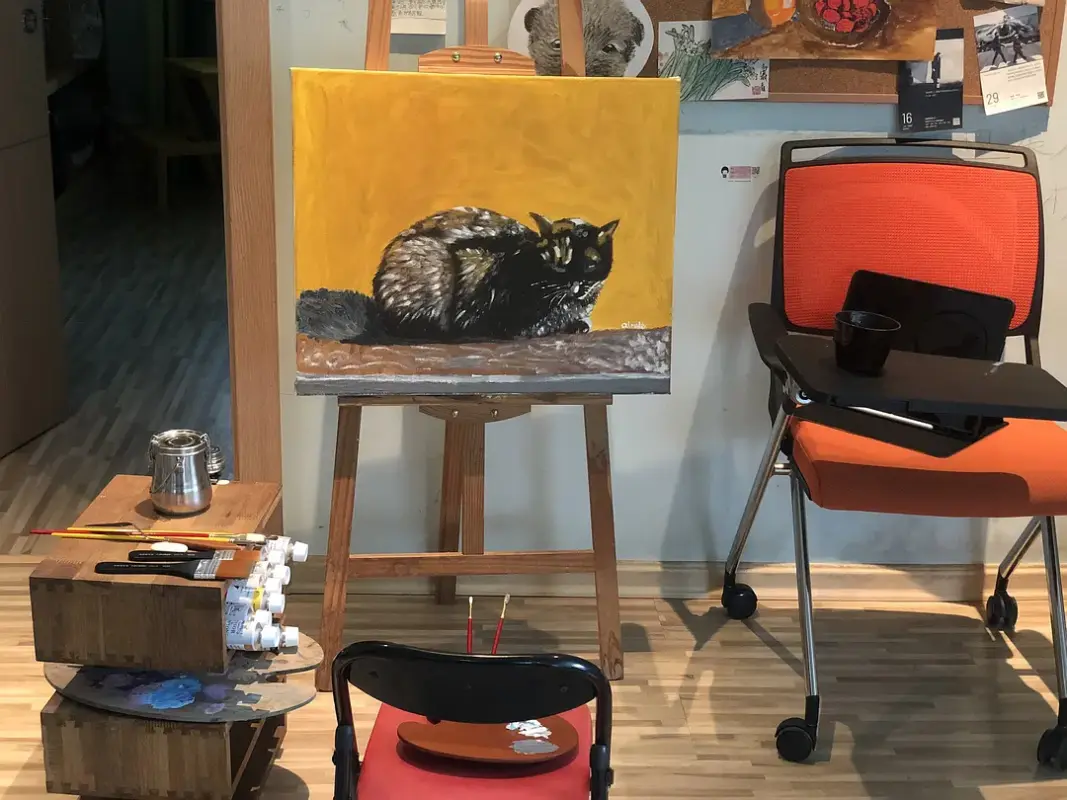
On the way home from school in springtime, we used to wander along the fields of pea vines and broad bean plants. The pea blossoms looked like tiny butterflies in flight, and the young pods—what we called “cat ears”—were treasures we searched for along the sun-bleached dirt paths and ridges.
Memories from childhood—like the taste of my mother’s cooking, the river by our house, the distant mountains, the chorus of cicadas in summer, or the snowflakes in winter—become part of the foundation of our lives. They shape us, unshakable. Which is why, for those who grow up with abuse or neglect, the damage is unimaginably deep.
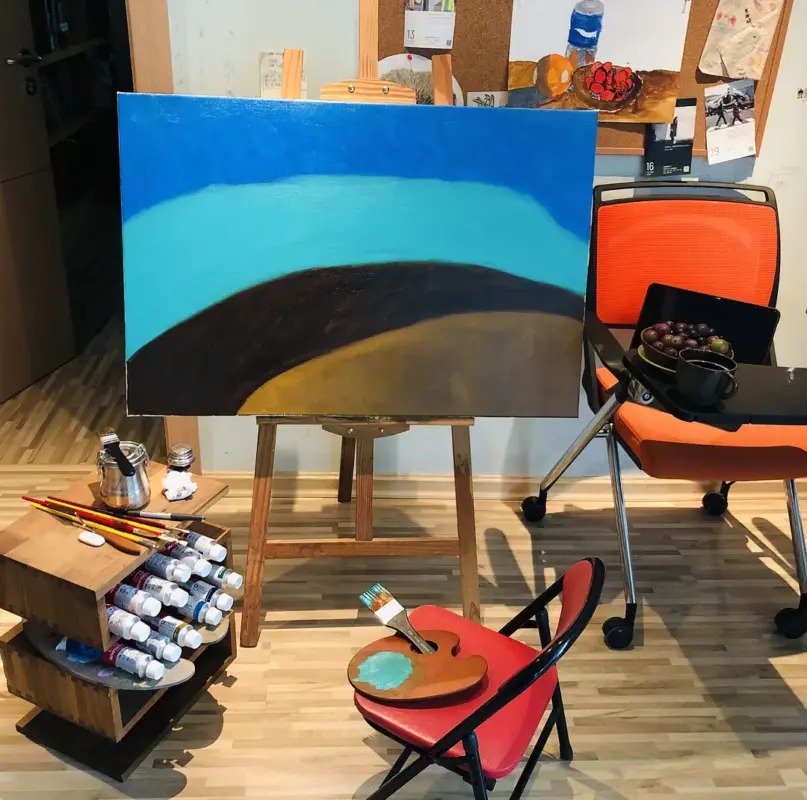
The things I remember most vividly are always tied to nature. And one of them is this memory, which became my painting “Cat Ears.”
I chose the background color by instinct, not knowing what the final effect will be. Now I just wait for it to dry.

